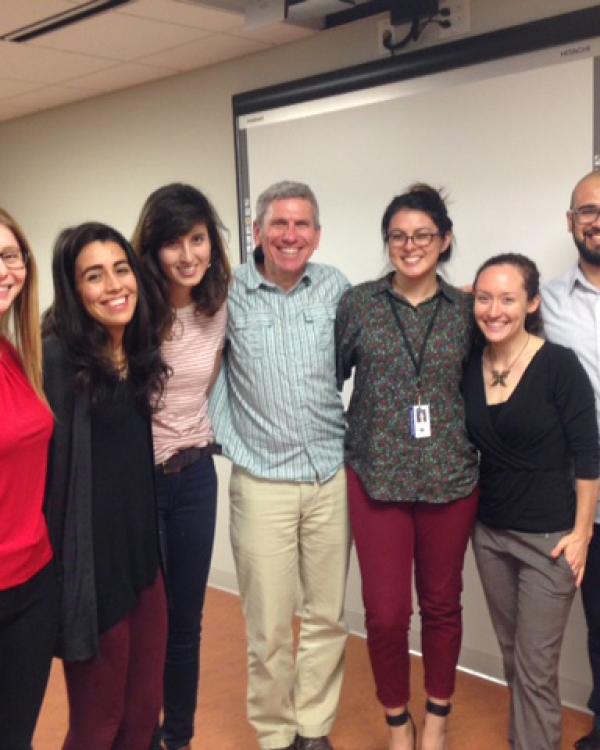
A roomful of English teachers at the Hyatt Regency Santa Clara is abuzz trying to puzzle out “Hygge.” Six credential candidates from the Teacher Education Program’s single subject credential for English track are leading the session, under the supervision of the Gevirtz School’s Tim Dewar. Together they have flipped the tables on the seasoned teachers in their seminar, putting them in the students’ places. What else might one expect at a workshop entitled “Experiencing Textual Difficulties: Supporting Students Reading Complex Texts”?
The demo was meant to help teachers discover how young readers understand complex and unfamiliar words using social media. “It’s a Danish word,” TEP candidate Lydia Valdez says. “We had them look up #Hygge on Twitter and Instagram. Then we had them get into pairs and talk about what they thought the word might mean, based on the tweets and pictures in which it was tagged.” After a group discussion, the students revealed the real definition of the word. “Hygge does not have a direct translation in English,” Alison Gomon notes. “It’s difficult to define. Hygge is a feeling of connection and community. It’s the positive emotion that comes from a deep sense of camaraderie.”
That deep camaraderie was also what Dewar and his group developed as they envisioned this research-to-practice workshop at the 58th Annual Statewide Convention for the California Association of Teachers of English (CATE). CATE’s annual conventions provide an opportunity for educators across California to network, collaborate, and discuss best practices in the teaching of English Language Arts – from preschool through college. This year’s theme – “Text and Tech: Blending Tradition with Innovation” – gave the TEP group the chance to shine.
 “It’s important for me that my students are involved in the work of learning,” Dewar, the Single Subject Teaching Credential Coordinator for TEP and Director of the South Coast Writing Project, asserts. “If I were to give the presentation myself and have my students watch me rather than actually have them present it themselves, that’s not teaching.”
“It’s important for me that my students are involved in the work of learning,” Dewar, the Single Subject Teaching Credential Coordinator for TEP and Director of the South Coast Writing Project, asserts. “If I were to give the presentation myself and have my students watch me rather than actually have them present it themselves, that’s not teaching.”
For the next half of the workshop, the candidates (Emily Bond, Cece Castañeda, Alison Gomon, Adam Lara, Larisa Owechko, and Lydia Valdez) used a digital platform called Padlet to facilitate further discussion on reading strategies. “We wanted to tap into the existing knowledge in the room,” says Bond. “All the participants in the workshop were English teachers with many years of experience. We wanted to show them how they could use applications like Padlet to exchange ideas.” Owechko described it this way: “Padlet is like a virtual wall where you can post virtual sticky notes. By downloading the app, the teachers were able to post their notes on the wall we created, and then we in turn were able to show the wall to the entire workshop.” Some of the varied sticky notes the teachers posted included reading strategies such as “Chunking: taking apart the text into smaller, more manageable pieces” and “Team Reading: have the students read the sentence chorally in one voice aloud.”
While the candidates could have chosen to do a more low tech brainstorming session for the second half of their workshop, it was important to them, in keeping with the theme of the convention, to demonstrate the benefits integrating high tech teaching techniques. “We wanted to integrate Padlet because it allows for every file type,” explains Castañeda. “Participants can contribute text posts, but they can also attach digital content to their sticky notes, such videos, images, and links.”
Overall, Dewar considers the event a major success. He is especially proud of the candidates for creating such a hands-on presentation for convention participants. “Educators need to engage in the practices that they are advocating for,” Dewar says. “That’s what I did with my students – and that’s what they did with the participants in the workshop. Everyone was involved in the work of learning.”